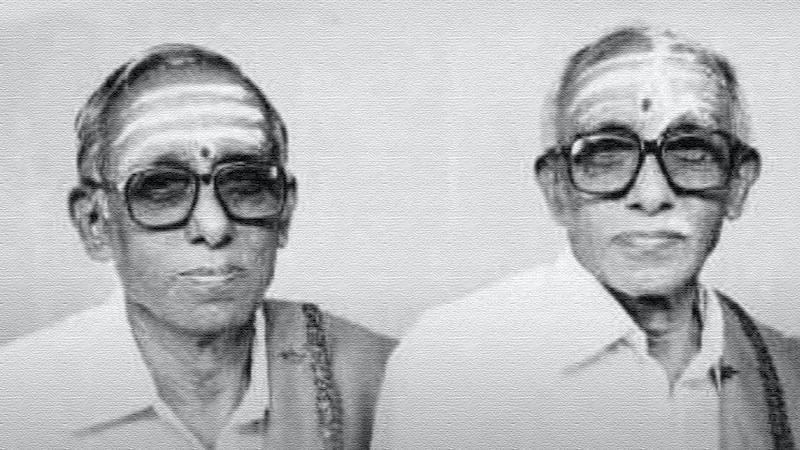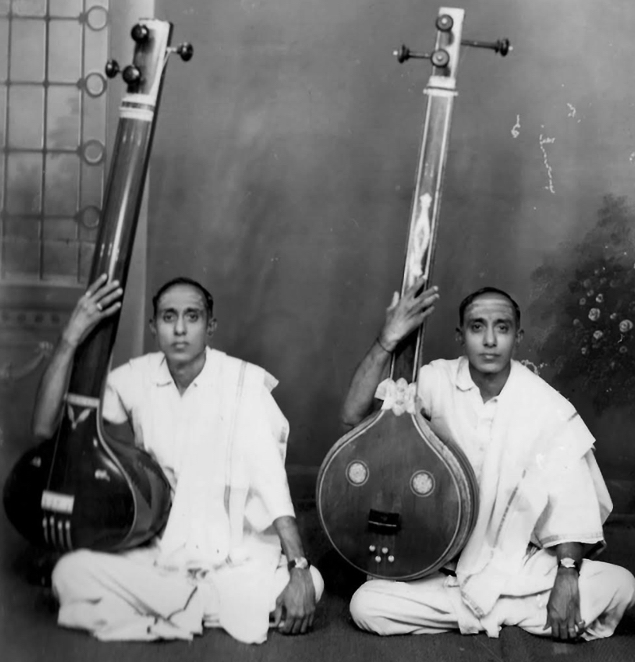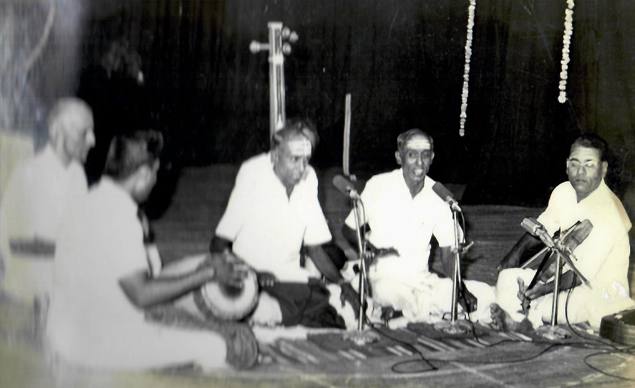BV Raman, BV Lakshmanan
This is a collection of articles archived for the excellence of their content. |
A brief biography
As in 2021
Bhama Devi Ravi, February 19, 2021: The Times of India

From: Bhama Devi Ravi, February 19, 2021: The Times of India

From: Bhama Devi Ravi, February 19, 2021: The Times of India

From: Bhama Devi Ravi, February 19, 2021: The Times of India
The names of Carnatic vocalists B V Raman and B V Lakshmanan bring to mind traditional guru parampara tradition and music mastered over the years, but their initiation into the world of Carnatic music was a result of a curious turn of events. Their began as observers until formal training commenced at 17, considered late for classical music.
As first-generation concert performers, they ended up leaving a mark in the crowded field of Carnatic music. They were 35 by the time they decided to turn performing artists, but were one of the earliest to design thematic concerts and made a unique contribution by bringing prominence to rare ‘kritis’ of Thyagaraja, Shyama Sastri and Muthuswami Dikshitar.
Born at Gooty in Andhra Pradesh, where their father B V Subramaia Iyer was the deputy collector, they grew up with a keen interest in the arts, cricket and tennis. However, just after they completed their matriculation and were planning to pursue academics, their father passed away in 1938. The twins relocated to the residence of their elder brother Ramamurthi in Bengaluru. Fond of music, he encouraged his siblings to formally take Carnatic lessons under Srinivasa Rao, a school teacher.
Bengaluru was a hub of music and dance then and the Bhavani brothers, as the twins were known, quickly mastered the art. The Gayana Samaja in Basavangudi was where Tiger Varadachari, the ‘jambhavan’ of Carnatic music, heard them sing. Realising their potential, he advised them to enrol at Annamalai University’s Music College in Chidambaram, considered the Ivy League of music those days, where he was the principal.
Always together, the twins lived apart for 12 years on the advice of the Kanchi pontiff, says their niece Revathy Sundarrajan. “There is a need for you to spread Carnatic music in Delhi, so it is best if Lakshmanan went to Delhi,” she recalls the Seer telling the duo. Lakshmanan joined the Karnataka Sangeeta Sabha, Delhi, in 1945. On his return to Chennai in 1957, it was like no time had passed, the twins got on to the concert bandwagon in earnest. But in the thriving cultural hub, without a family name or wealthy patrons to back them, breaking into the top circuit was not easy.
They began visiting students and taught music and evolved to be much sought-after gurus. Lakshmanan was the kinder one, more open to the student’s point of view, while Raman was the stern music master. “If I did not make the talam audible, he would slap the talam on my lap so hard that the thigh would turn red. I would protest, but he would say, if you do not keep the beat, how will you internalise music?” recalls a student. The ‘padanthiram’ of the twins was such that often many musicians consulted them on nuances of a kriti, including Maharajapuram Santhanam.
During the four-year course, the twins resided with Tiger in the ‘gurukulavasam’ manner. Every Saturday, there was a ritual of giving the guru an oil massage. As one brother applied hot oil and massaged his scalp, the other would start a wood fire to heat up water, and Tiger would break into a Todi or Kalyani raga exposition. This would be followed by involved discussions of music. By the time they graduated, and shifted to Chennai, the twins could compose music, write notations and lyrics, render error-free concerts, and also teach.
Like many musicians of the time, the twins too were given a break by All India Radio (AIR). They also travelled to a number of towns, giving performances. Raman had what is known as a ‘vengala (brass) kural’ and his rendition in Varali or Todi often drew appreciative murmurs. Each let the other take the concert forward in his own way, without any attempt at controlling the other. Although Dikshitar ‘kritis’ were their signature songs, their rendition of ‘Mannupugazh kosalai’ by Kulasekara Azhwar was an evergreen hit and often featured on AIR.
Vocalist Sudha Raghunathan remembers the five years under B V Lakshmanan to be an intensive study that helped perfect her craft. “I may have been 15 years old when I began taking lessons from Lakshmanan sir. I learned some rare ‘kritis’ from him. I was young and had a natural flair to absorb what was taught and so developed a deep bond of music with my guru. I vividly remember him teaching me a Muthuswami Dikshitar Madhuramika kriti,” says Sudha.
Their impeccable knowledge, turned the most difficult students into hardworking ones. A few years ago, renowned Bharatnatyam exponent Padma Subrahmanyam said the BV Brothers made her fall in love with vocal music. “As much as I loved dance, I hated singing and whenever the music teacher chosen by my father came home, I would scale the compound wall, and hide until the teacher left for good. It was only after Raman and Lakshmanan taught me that I began to enjoy singing,” she says.
But it was their benevolence and thoughtfulness that students remember the most. A student recalls how for her marriage, the gurus gifted her the entire amount she had paid for her classes, spanning years, with interest. “My father was not very well off, but he paid for my music classes. Raman sir and Lakshman sir knew about our condition. So, every month they deposited the fee I gave them into a bank account and paid it all back, with interest, along with their gift, for my wedding. They did this for many students, but did not want aeny publicity,” she says.
Sundarrajan says her uncles considered their students to be their family. “Their knowledge was the legacy they left behind,” she say.
The world of ragas
- Born in a middle-class family in Gooty in 1921, they had a keen interest in arts and sports
- The brothers were planning to pursue accountancy and radio engineering, when their father died and they moved in with their elder brother
- Their elder brother being a music aficionado encouraged them to take Carnatic lessons at the age of 17
- The two enrolled in the Music College, Annamalai University in Chidambaram and learned under the direct tutelage of Tiger Varadachari
- Brought to prominence to rare ‘kritis’ of Thyagaraja, Shyama Sastri and Muthuswami Dikshitar Won the Sangeeta Jyoti by Swami Sivananda (1952), Isaikadal by Tamil Isai Sangam (1984) and Sangeeta Acharya by Narada Gana Sabha (1994) among others
- BV Raman received the Sangeeta Nataka Academy Award in 1998 and the Sangeeta Kala Acharya award from the Music Academy, Chennai
- In 2005 BV Raman stopped public concerts after his twin BV Lakshmanan passed away in 1999
- Known for their teaching style with Lakshmanan being more open to students’ perspective and Raman being the stern teacher Students include dance exponent Padma Subrahmanyam, vocalist Sudha Raghunathan and Sashidharan